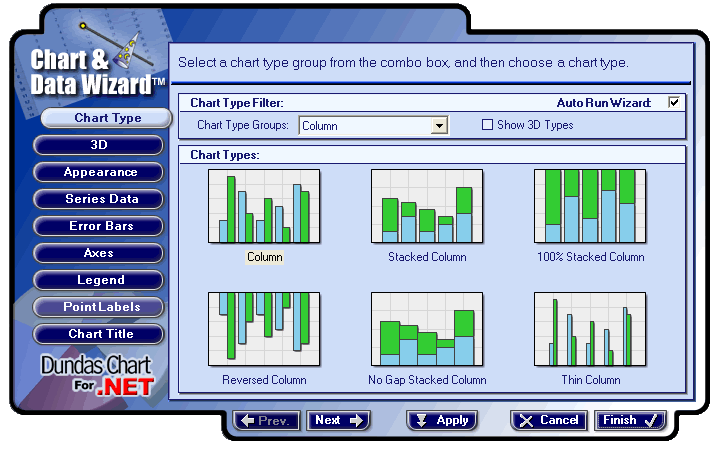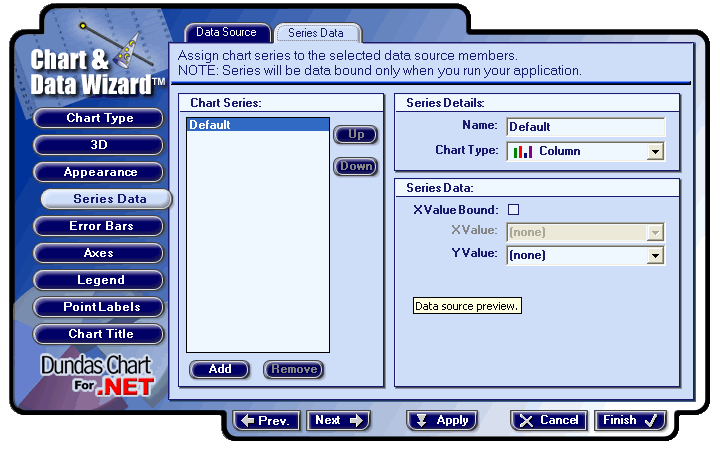III. In VS.NET 2003
By default, it is not included in the IDE. However, the Readme explains how to correct this by using the "Customize Toolbox" ("Add/Remove Items" in VS.NET 2003) option in the toolbox, and once that's done, it works fine.
Dragging a Chart onto a web page using the VS.NET designer opens up the Dundas Chart Wizard (by default - you can turn it off if you like). This is a very useful tool, and makes adding charts to your web forms a breeze. Once the wizard is completed, the chart appears on the design surface approximately as it will when it is rendered. To return to the wizard to edit the chart's properties, simply right-click on the chart control on the design surface, and select 'Wizard'.

A new feature of this version of Dundas Chart is the addition of the Series Data menu to the wizard. This allows you to connect to a data source and preview the data you're going to use in the chart, and to determine which columns from the data should be used. For my sample application, I was using a custom data layer, so I already had my data in a DataTable object. But if that had not been the case, I could have quickly grabbed the data using the wizard, and avoided the two lines of code I ended up writing to bind to my DataTable.


As you can see, the wizard is very easy to use - there's no need to go crawling through obtuse APIs to learn how to set up a chart object and make it render itself. Just drag the control onto the design surface, run through the wizard, maybe write a line or two of code to wire things together, and voila! A beautiful chart. I think the most difficult part of this whole process was granting write permissions to the folder where the chart images are created for the ASPNET account, and that took about 30 seconds and was clearly documented in the readme.